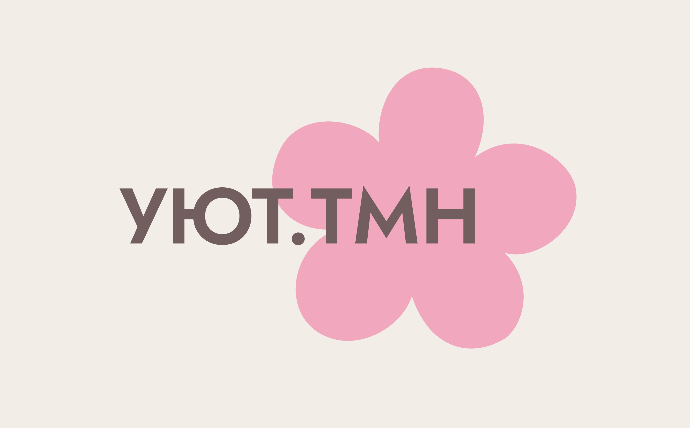In a highly competitive and saturated creative services market, brand visual identity is particularly important. Corporate identity is becoming not just a tool for recognition but also a factor in building audience trust. For brands operating in emotionally charged industries, such as master class studios, visual communication is a key means of conveying values and atmosphere.
The purpose of this study is to determine the role of corporate identity in building trust in creative brands, using the example of the master class studio "UYUT.TMN."
The objectives of the study include: analyzing theoretical approaches to understanding corporate identity; examining the mechanisms by which trust is built through visual elements; and exploring the characteristics of the UYUT.TMN brand's corporate identity and its impact on audience perception.
Research methods: theoretical analysis of branding and communications literature, content analysis of brand visual materials, and audience response monitoring.
Corporate identity is a system of visual, graphic, and verbal elements that ensure brand recognition and identity. It integrates the logo, color palette, fonts, graphic symbols, and principles of their application. From a marketing communications perspective, corporate identity performs two key functions: identification and emotional.
Modern research shows that visual consistency and aesthetic harmony enhance brand trust, especially in the creative industries. Trust is built through a sense of coherence across all communications — when design, content, and positioning convey a unified emotion and values.
Brand aesthetics become a means of emotional self-presentation. According to Jean Baudrillard, the visual culture of modern society transforms brands into bearers of meaning and lifestyle. Consequently, corporate identity not only identifies but also interprets the brand in the audience's mind, creating the basis for emotional connection and trust.
Creative brands are distinguished by a high degree of personalization and emotional engagement with the audience. Unlike mass-market products, the impression the brand leaves after interaction plays a decisive role.
For such brands, corporate identity becomes a visual communication language through which values — comfort, joy, sincerity, and inspiration — are conveyed. Colors, compositions, fonts, and graphics form not only a visual but also an emotional frame of reference. Trust in creative brands is built through consistency between visual presentation and the actual user experience. When style reflects the audience's real emotions, the brand is perceived as authentic and open.
The UYUT.TMN studio is a creative space for adults and children, offering workshops focused on relaxation, self-expression, and creating aesthetic experiences. The brand's mission is to provide people with emotional warmth and inspiration through creativity.
The studio's corporate identity reflects these values through carefully selected visual elements. The color palette utilizes hot pink, bright orange, soft pink, beige, and brown. This combination evokes associations of warmth, comfort, and emotional openness. The font solution includes Soyuz Grotesk for headlines and Jost for body text, ensuring a modern yet soft tone to the communication.

Figure 1. Logo of the studio "UYUT.TMN"
The UYUT.TMN brand logo is shown in Figure 1. It consists of the brand name and the signature symbol — a minimalist flower symbolizing growth, inspiration, and harmony. This element is actively used as a pattern in printed materials and online communications.
The UYUT.TMN corporate identity is evident across all touchpoints: from visual content on social media to space design and branded T-shirts. The consistency and integrity of the visual identity create a sense of professionalism and attention to detail.
One of the key tools for building trust for the UYUT.TMN brand is visual sincerity.

Figure 2. Example of content from the UYUT.TMN studio
The studio's pages (Fig. 2) feature real photos and video reports from events, capturing the smiles, laughter, and enthusiasm of the participants. This content creates a sense of presence and emotional connection.
Visual warmth, combined with soft graphics and harmonious colors, enhances a sense of safety and friendliness. This is especially important for the studio's core audience — women aged 18–40 seeking emotional release and inspiring experiences.
Participant reviews emphasize that attention to detail and aesthetics builds trust: "everything is beautiful, well-thought-out, and cozy." Thus, trust is built not only through the brand promise but also through a visually confirmed atmosphere of warmth and sincerity.
The study showed that corporate identity is one of the key factors in building trust in creative brands. Visual identity serves not only the function of recognition but also the function of emotional engagement. Using the example of the UYUT.TMN studio, it can be seen that a cohesive corporate identity based on harmonious colors, soft graphics, and sincere visual communication helps build trust with the audience. Consistent visual solutions and the demonstration of genuine emotions create a sense of authenticity and security in consumers, which is especially important for brands in the creative and leisure industries.
The practical significance of this study lies in the fact that its results can be applied to the development of visual strategies for creative brands focused on emotional engagement and building long-term customer relationships.
Список литературы
- Kapferer J.-N. A Brand Forever: Creating, Developing, and Maintaining Brand Value / Moscow: Vershina, 2006. 448 p.
- Aaker D. Creating Strong Brands / Grebennikov Publishing House, 2003. 440 p.
- De Chenatony L. (1999). Brand Management Through Narrowing the Gap between Brand Identity and Brand Reputation // Journal of Marketing Management. Vol. 15
- Litvinov N.N. Brand Culture: Winning Customer Favor // Brand Management. 2007. No. 5. pp. 338-343, p. 340
- Domnin V.N. Branding: New Technologies in Russia. St. Petersburg: Piter, 2004. 381 p.
- Kozeychuk D.A. Perceived origin as a focal point in brand management // Brand management. Nº 06 (73). 2013. P. 346-357



